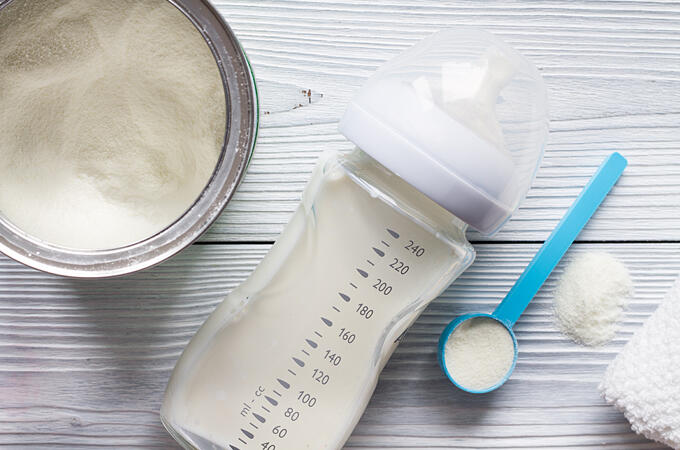In a joint study with Faculty of Medicine of the University of Tokyo, Faculty of Medicine of Toho University, Meiji Holdings, and Meiji, Professor Toshiaki Shimizu of the Graduate School of Medicine and Assistant Professor Hiromichi Shoji of the Faculty of Medicine at Juntendo University have found that infant formulas with the structures of the main lipid triglycerides (TGs) closer to breast milk reduce excretion of palmitic acid (PA), a fatty acid, in stool to levels similar to those in breastfed infants. This work was published in the online edition of Nutrients.

Lipids are nutrients that account for half of the energy intake in infants, and PA accounts for one-fifth of that. Absorption of fatty acids depends on the binding site of TGs (sn-1, sn-2 or sn-3), and those bound to the sn-2 position are efficiently absorbed without being digested by lipases. Conversely, fatty acids at the sn-1 and sn-3 positions are released as free fatty acids by lipase, and PA is saponified (reaction of fats and oils with alkali) in the intestinal tract to form insoluble calcium fatty acids, which leads to a decrease in the absorption efficiency. Approximately 70%−80% of PA in breast milk binds to the sn-2 position. Previous studies using infant formulas with 40%−50% of PA bound to the sn-2 position have shown decreases in the excretion of lipids and calcium and increases in bone mineral content and bifidobacterial counts. However, no previous clinical studies in Japan have focused on the binding ratio of PA at sn-2 in infant formulas.
In this study, the research group analyzed 149 healthy infants born at Juntendo University Hospital, the University of Tokyo Hospital and Toho University Omori Medical Center. Stool samples were obtained at the 1-month health checkup, and the infant's breast milk intake, infant formula brand and feeding volume were surveyed the week prior to the checkup. PA levels in stools were determined via gas chromatography of ether-extracted lipids from the stools.
Total PA levels in stool were measured with lipids extracted in the presence of hydrochloric acid. Non-saponified PA levels were measured with lipids extracted without hydrochloric acid. Saponified PA levels in stool were calculated as the difference of the two. The median total PA level in stool at the 1-month health checkup was the highest in low-sn-2-formula fed infants and was significantly higher than that in breast-fed infants and that in high-sn-2-formula-fed infants. The median saponified PA level in stool was the highest in low-sn-2-formula-fed infants and was significantly higher than that in high-sn-2-formula-fed infants.
Multiple regression analysis was performed regarding the association of feeding volumes of high and low sn-2 milk with total and saponified PA levels in stool. The analysis results showed that total and saponified PA levels in stools were positively correlated with feeding volume of the low sn-2 milk, whereas they showed no associations with feeding volume of the high sn-2 milk.
These results showed associations between feeding volume of low sn-2 milk and total and saponified PA levels in stool evaluated at 1 month of age, whereas no associations were observed between feeding volume of high sn-2 milk and total and saponified PA levels in stool. The results also suggest that use of infant formulas with 50% or more PA bound to sn-2 is a condition necessary to reverse the increased PA excretion in stool to a level comparable to that observed in breast-fed infants. The findings are expected to be useful for improving infant formulas and contribute to better growth and development of infants.
Journal Information
Publication: Nutrients
Title: Infant Formula with 50% or More of Palmitic Acid Bound to the sn-2 Position of Triacylglycerols Eliminate the Association between Formula-Feeding and the Increase of Fecal Palmitic Acid Levels in Newborns: An Exploratory Study
DOI: 10.3390/nu16111558
This article has been translated by JST with permission from The Science News Ltd. (https://sci-news.co.jp/). Unauthorized reproduction of the article and photographs is prohibited.




